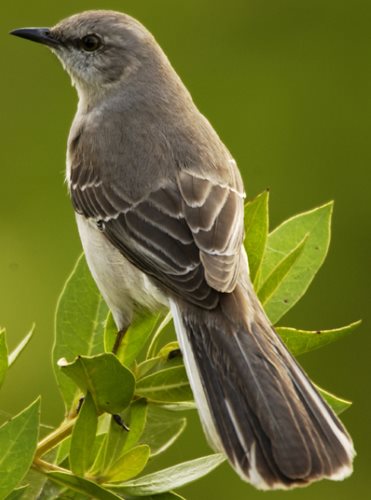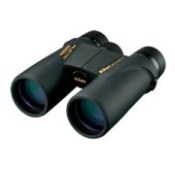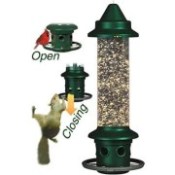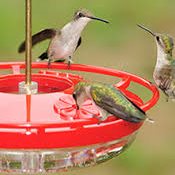
U.S. State Bird of Arkansas, Florida, Mississippi, Tennessee and Texas -
Northern Mockingbird
Mockingbirds are considered one of America's favorite backyard birds.

Perhaps that is why five states have chosen the Northern Mockingbird (Mimus polyglottos) as its state bird: Arkansas, Florida, Mississippi, Texas and Tennessee.
The Northern Mockingbird is known for imitating or "mocking" the songs of other birds. Its Latin name means "mimic of many tongues."
- American Ornithologists Union (AOU) Common Name: Northern Mockingbird
- Family: Mimidae, Mockingbirds, Thrashers
- Scientific name: Mimus polyglottos
- Length: 10" (25 cm)
- Diet: Insects, fruit; includes crayfish, sowbugs, snails, few small vertebrates; berries.
- Voice: Song of varied phrases in regimented series: each phrase repeated 2-6 times, then an obvious pause followed by a different series krrDEE-krrDEE-krrDEE, jeurrrdi jeurrrdi jeurrrdi...; most phrases musical; many imitations of other species. Call a harsh, dry chak; harsher and longer than blackbirds; aggressive call a high, wheezy skeeech.
- Habitat: Found in a variety of habitats including towns, farms, roadsides, thickets.
- Displays: Male and female perform mating"dance" facing each other with heads and tails high, darting at each other and retreating; may also serve as territorial display, often occurring between males.
- Number of broods: 2, occasionally 3 or 4
- Nest: Usually in coniferous or deciduous tree (3-10' above ground), also occasionally in vines; of twigs, lined with grass, rootlets. Male usually builds foundation, female lines it. Built in 4-8 days.
- Eggs: Averages 3-5 blue-green eggs, usually heavily marked with browns; 1.0" (24 mm).
- Incubation period: 12-13 days
- Fledge: 11-13 days after hatching
- Longevity Record: 14 Years and 10 months (according to USGS Bird Banding Lab)
Mockingbird Imitating Other Birds and Car Alarm
In the video below, a Northern Mockingbird imitates the songs and calls of Great-tailed Grackles, Cardinals and Cactus Wrens.
At the 2:50 mark, it imitates a car alarm and at 10:21, it makes the sound a Mourning Dove's wings makes when taking off.
The Northern Mockingbird was adopted as the Arkansas State Bird by the General Assembly of 1929.
Senate Concurrent Resolution No. 3 of the 1927 legislative session designated the Mockingbird as the state bird.
The Mockingbird was selected as the official State Bird by the Women's Federated Clubs and by the State Legislature in 1944.
According to the Nashville Banner of April 16, 1933, the mockingbird was selected on April 11, 1933 as the Tennessee State Bird in an election conducted by the Tennessee Ornithological Society. The choice was confirmed by Senate Joint Resolution 51 adopted by the General Assembly in 1933.
The Mockingbird was designated the Texas State Bird in 1927 (Senate Concurrent Resolution 8, 40th Legislature, Regular Session).
Northern mockingbirds are fascinating birds known for their unique behaviors and characteristics. Here are some interesting facts about them:
**Mimicry Skills**: Northern mockingbirds are renowned for their incredible ability to mimic the songs of other birds, as well as various sounds they hear in their environment, including car alarms and barking dogs. They can imitate over 200 different sounds!
**Song Variety**: A single mockingbird can have a repertoire of multiple songs, and they often mix and match these songs in a single performance. Males are particularly vocal during the breeding season to attract females.
**Territorial Behavior**: Mockingbirds are highly territorial, especially during the breeding season. Males will sing loudly and aggressively defend their territory from intruders, including other mockingbirds.
**Physical Appearance**: Northern mockingbirds have a slender body, long legs, and a long tail. Their plumage is mostly gray-brown with white wing patches that are visible in flight, making them easily recognizable.
**Diet**: Mockingbirds are omnivorous and have a varied diet that includes insects, fruits, and berries. They are known to forage on the ground and can often be seen hopping around gardens and parks.
**Breeding and Nesting**: Northern mockingbirds are known to have multiple broods each breeding season. They typically build their nests in shrubs or low trees, using twigs, grass, and other plant materials.
**Longevity**: These birds can live for several years in the wild, with some individuals known to reach ages of up to 8 years or more. Factors such as predation and habitat loss can impact their lifespan.
**Cultural Significance**: The northern mockingbird has cultural significance in various regions. It is the state bird of several states, including Texas and Florida, and has been referenced in literature and music, symbolizing freedom and creativity.
**Adaptability**: Mockingbirds are highly adaptable and thrive in a variety of habitats, including urban areas, gardens, and open fields. Their ability to adjust to human environments has contributed to their widespread presence.
**Nocturnal Singing**: While mockingbirds are typically diurnal, they are known to sing at night, especially during the breeding season. This behavior can sometimes lead to them being referred to as "nightingales of North America."
These characteristics make the northern mockingbird a unique and intriguing species within the avian world.
Northern Mockingbird Coloring Page
More information about the Northern Mockingbird, its life history, song, identification can be found here.
|
Our Favorite Bird Watching Binoculars, Squirrel-Proof Feeder & Hummingbird Feeder Read Our Reviews: |
||

Nikon Monarch M5
Best mid-priced bird watching binoculars. Waterproof, shockproof, multi-coated ED-Glass. |

|

Best Hummingbird Feeder
Drip-Free, Ant-moat, Durable, Easy to Fill and Clean. |
| Click Images or Links To View More Info | ||